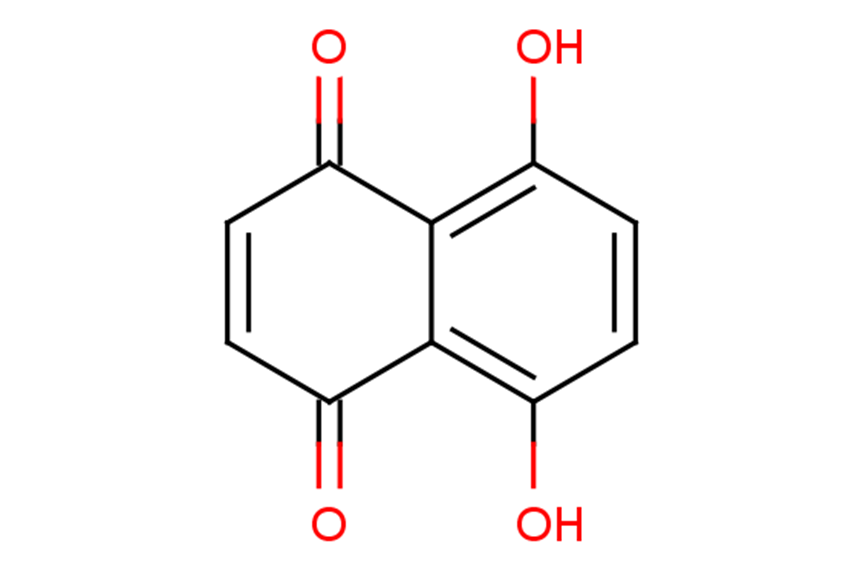
Naphthazarin
CAS No. 475-38-7
Naphthazarin( DHNQ,5,8-Dihydroxy-1,4-naphthoquinone )
Catalog No. M22399 CAS No. 475-38-7
Naphthazarin is effective by various cellular mechanisms including oxidative stress, activation of mitochondrial apoptosis-inducing factor (AIF), depolymerization of microtubules, interference with lysosomal function and p53-dependent p21 activation.
Purity : >98% (HPLC)
 COA
COA
 Datasheet
Datasheet
 HNMR
HNMR
 HPLC
HPLC
 MSDS
MSDS
 Handing Instructions
Handing Instructions
| Size | Price / USD | Stock | Quantity |
| 100MG | 57 | In Stock |


|
| 200MG | Get Quote | In Stock |


|
| 500MG | Get Quote | In Stock |


|
| 1G | Get Quote | In Stock |


|
Biological Information
-
Product NameNaphthazarin
-
NoteResearch use only, not for human use.
-
Brief DescriptionNaphthazarin is effective by various cellular mechanisms including oxidative stress, activation of mitochondrial apoptosis-inducing factor (AIF), depolymerization of microtubules, interference with lysosomal function and p53-dependent p21 activation.
-
DescriptionNaphthazarin is effective by various cellular mechanisms including oxidative stress, activation of mitochondrial apoptosis-inducing factor (AIF), depolymerization of microtubules, interference with lysosomal function and p53-dependent p21 activation. It triggers apoptosis and has anti-tumor effects.
-
In Vitro——
-
In Vivo——
-
SynonymsDHNQ,5,8-Dihydroxy-1,4-naphthoquinone
-
PathwayApoptosis
-
TargetApoptosis
-
Recptorapoptosis
-
Research Area——
-
Indication——
Chemical Information
-
CAS Number475-38-7
-
Formula Weight190.15
-
Molecular FormulaC10H6O4
-
Purity>98% (HPLC)
-
Solubility——
-
SMILESOc1ccc(O)c2C(=O)C=CC(=O)c12
-
Chemical Name——
Shipping & Storage Information
-
Storage(-20℃)
-
ShippingWith Ice Pack
-
Stability≥ 2 years
Reference
1. Omar Aljanadi, et al. Stimulation of Suicidal Erythrocyte Death by Naphthazarin. Basic Clin Pharmacol Toxicol. 2015 Dec;117(6):369-74.
molnova catalog



related products
-
SF5
SF5 is an inhibitor of the apoptosis pathway through JNK-p53-caspase apoptotic cascade.
-
CCCI-01
CCCI-01(Centrosome Clustering Chemical Inhibitor-01) is a centrosome cluster inhibitor. CCCI-01 has anticancer activity, induces apoptosis, and can be used in the study of non-cross-resistant anticancer compounds that block centrosome clustering.
-
Bigelovin
Bigelovin is a selective retinoid X receptor α agonist.?Bigelovin suppresses tumor growth through inducing apoptosis and autophagy via the inhibition of mTOR pathway regulated by ROS generation.It is also known as a potent cytotoxic sesquiterpene lactone from Inula sp.



 Cart
Cart
 sales@molnova.com
sales@molnova.com


